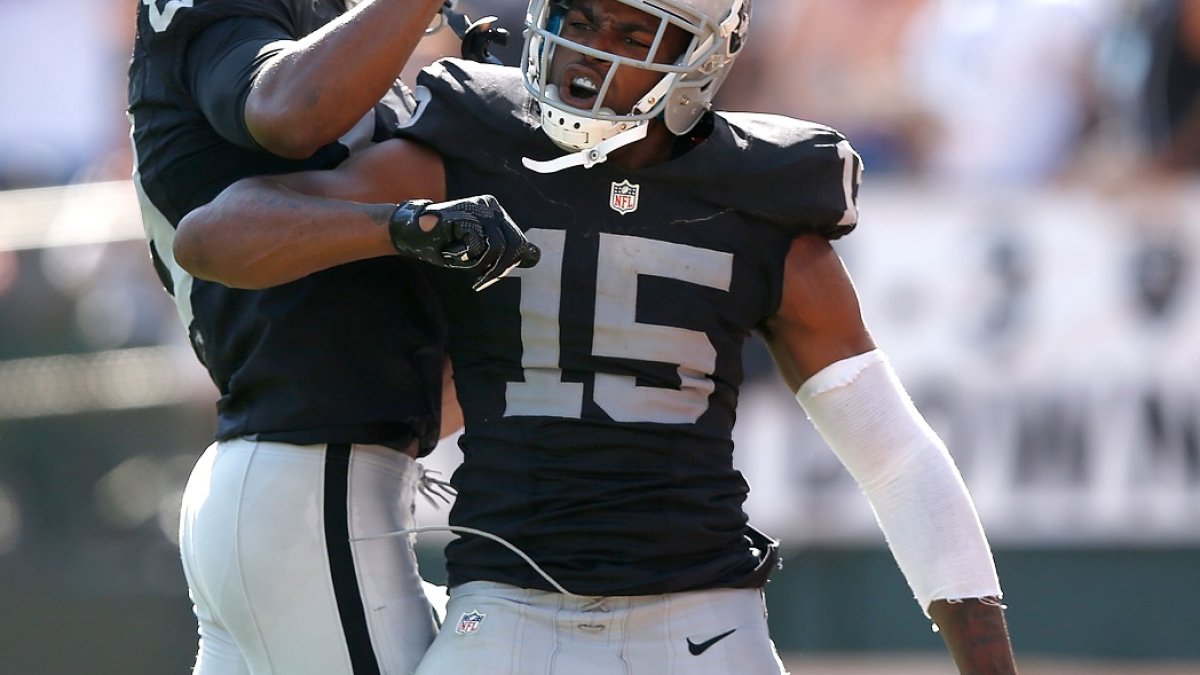(“Today's Crazy Fantasy Stat” is an occasional offseason offering from PFF that highlights something that catches our eye and aids in our preparation for the 2017 fantasy season.)
Amari Cooper has had a crazy start to his career. He’s been a top-25 wide receiver twice, top-15 once. He’s one of only four wide receivers (along with Odell Beckham Jr., Mike Evans and A.J. Green) since 2010 to top 1,000 yards in each of his first two seasons. His 72.7 PFF grade as a rookie improved to 80.9 (23rd among receivers) in 2016.
And yet, he’s never been the No. 1 fantasy receiver on his own team.
Cooper’s production has actually been held in check the last two years by the presence of Raiders teammate Michael Crabtree. Cooper has notched 2,236 yards over his two seasons, but has only 11 touchdowns — of the 95 players with back-to-back 1,000-yard seasons in the last decade, only eight had fewer combined touchdowns than Cooper. Crabtree, meanwhile, is more than 300 yards behind Cooper in that time (1,925), but has 17 touchdowns.
(Subscribe to all our fantasy content, or get everything PFF offers with an All-Access subscription.)
Part of the reason for that is simple touchdown luck — Cooper has found the end zone on only 4.4 percent of his targets (low, but not especially so). But not all touchdown luck is made equal. In 2016, Cooper never scored from inside of 32 yards, while all eight of Crabtree’s scores came from 21 yards or closer (including five from inside the 5-yard line). The difference wasn’t as pronounced in 2015, but it still existed — Cooper still hasn’t scored from inside 15 yards in his career. His average touchdown yardage has been 37.1, while Crabtree’s has been 16.3. In the red zone, Crabtree had 22 targets last year, compared to 13 for Cooper.
The Raiders simply have a system they prefer — and, given the team’s improvements over the last two years, it’s a system that works. Until something changes, Crabtree is a bit more likely to get the look than Cooper.
That’s not an indictment on Cooper, or on Crabtree, or on the Raiders. But it has to factor into any fantasy valuation of Cooper. He’s shown to be an elite receiver in his two seasons, and assuming health, there’s no reason to think that won’t continue. But unlike most of his big-yardage brethren, Cooper’s touchdown odds are going to be lower as long as Crabtree is around.
Cooper finished 2016 as the No. 14 fantasy wide receiver. With a little more touchdown luck, he could easily be a top-10 guy. The problem is, that touchdown luck doesn’t seem to be in the offing for him. When valuing Cooper for 2017, look at him as a mid-to-low WR2 at best, and if the touchdown rate happens to improve, it’s gravy.



 © 2025 PFF - all rights reserved.
© 2025 PFF - all rights reserved.